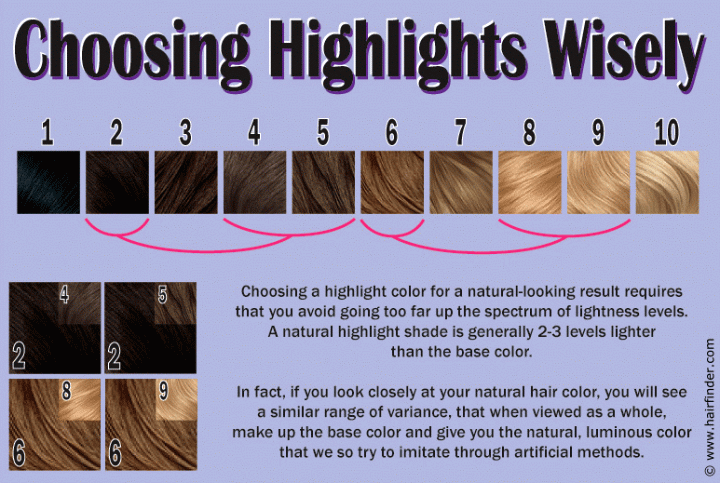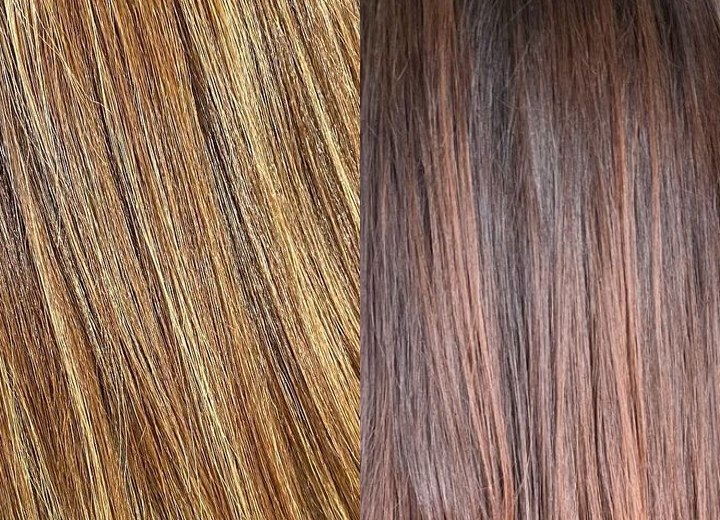How to Choose Natural-Looking Highlights

I'm often asked to give advice on choosing highlights for someone's hair, and I honestly don't mind doing it, because for the most part, a lot of people tend to go to extremes when it comes to highlighting their hair. I will acknowledge that there have been periods where "high-contrast" highlighting was the norm. But these looks have never been remotely natural-looking.
And frankly, these high-contrast highlights have been responsible for a lot of damage that has been done to women’s (and men’s) hair over the years. From the "Frost and Tip" kits of the 1970s and 1980s to the "Streaks" and "Tri-Color Looks" of the 1990s and early 2000s, such extreme highlighting techniques have skewed the general public's idea of what constitutes highlighting.
Compatibility:
The subject of compatible colors is actually important in choosing highlighting colors. Unfortunately, it’s also one of the trickier aspects of choosing a highlighting color. You need to choose a color that will add depth to the starting color, but that also will blend with the color and not look out of place or result in some unfortunate color outcomes. To that end, we need to consider the base color of the hair and determine some things about it.
The main two things we need to determine about the hair are the color base and lightness level of the starting color. Of the two, the one that is most important is the color base, since using a color for highlighting with a conflicting base color can have some unfortunate outcomes.
{NOTE: In the rest of this article, we may use the terms "natural color" or "starting color" interchangeably. If you are looking to add highlights to your hair and your hair is already colored, we are referring to the color your hair is currently.}
For instance: say your hair has a golden base color, and when you lighten it, the color naturally reveals itself as a golden-yellow hue. Now, if you used a highlight color that had an ash base, you’d find your highlights turning an unpleasant green shade. Likewise, even without an unfortunate color conflict, you can find yourself with issues.
Such as with hair that has an orange color base (common among those whose hair is dark, chocolaty brown), it is important to pay attention to the amount of base color that is revealed as you highlight the hair. If you use a color that also has an orange base and is strongly reddish in hue, or has a golden base with equally strong tones, you can get very brassy results.

So, we must determine the color base of the hair as well as the lightness levels. To do this most easily, I suggest a visit to your local beauty supply store, where you will find swatches of hair colors. These are usually either clipped to the shelves where the hair color is sold, or compiled into books that are placed in the same areas so that you can access them as references.
Of course, you could enlist the help of your salon stylist to make this determination, but being able to compare and see all the various shades that may be close, but not quite right, will help you to learn to understand your hair’s color make-up more readily. So, position yourself in your beauty supply store's hair color aisle and take out a hand mirror or compact and hold up the swatches to your own hair and find one that matches.
It's important to hold the hair against your own so that you can more easily notice differences in tone and color base. Be patient, and keep trying as you get closer and closer to the natural color. Once you feel secure that you’ve matched your color, then we can look at the options that are available.
{NOTE: If your hair is already colored and you know the color and shade that was used, you can save yourself some time and effort by using the color in your hair.}
The swatch that matches your hair color will more than likely have a code that the manufacturer uses to classify the shades available, and you may have to consult the package of color to get the information you need. In some cases, the code is pretty easy to decipher. For instance, Clairol tends to use an alphanumeric code that has a numeral with one or two letters to signify the color being represented. A "6N" would refer to the color being level 6, with a neutral base color. Likewise, a "10GN" would be a level 10 with gold and a neutral base color.
Continue reading ...